Oh no! You’ve been asked to perform a demonstration on Microsoft Dynamics 365 for Finance and Operations, Enterprise edition tomorrow and you don’t even have an environment to demonstrate in! Never fear. With Microsoft Dynamics Lifecycle Services (LCS) and its ability to deploy demo environments, you can be assured your environment will be the least of your worries
Before Deploying
To no one’s surprise, there are some necessary prerequisite steps to deploying an environment from LCS.
In order to deploy an environment, you will first need to verify that you are the administrator or co-administrator on an active Microsoft Azure subscription. You will then need to ensure you have the correct privileges to deploy an environment in an LCS project. Once you’ve verified these items, you can connect your Azure subscription to your LCS project by using the Azure Resource Manager.
If you need additional help in these areas before you deploy your environment, visit Microsoft’s documentation site: https://docs.microsoft.com/en-us/dynamics365/unified-operations/dev-itpro/deployment/arm-onboarding
Deploying Your Demo Environment
Once you’ve confirmed that your Azure subscription and LCS project are linked together, you’ll be ready to deploy your demo environment.
To deploy your environment, follow along with the steps and screenshots.
- In your LCS project, click the plus icon (+) in the Environments

- On the Select environment topology pane, select Azure as the location to deploy the environment. This allows you to deploy a cloud environment, as opposed to a locally-deployed environment.
 Step 2
Step 2
- On the Select environment topology pane, select Demo as the type of topology to deploy.
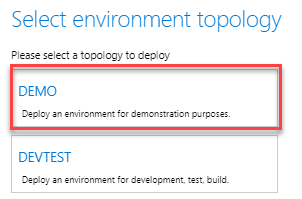 Step 3
Step 3
- On the Select environment topology pane, select the most recent system update as the topology to deploy. If you need them, older versions of environments are available as well.
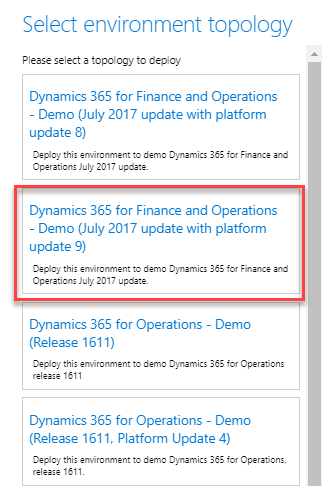 Step 4
Step 4
- In the Select Azure connector pane, select one of the connectors listed. These Azure connectors are typically based on region. Which connector you choose will depend on your organization.
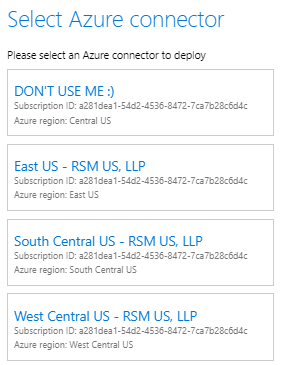 Step 5
Step 5
- In the Environment name field, enter a name. It’s important to enter a unique name; otherwise, you’ll receive an error when attempting to deploy.
- To add customizations to your environment, click Advanced settings. For the purpose of a demo environment, Microsoft recommends using the default settings.
- In the Size field, select one of the sizes with the D*v2 naming convention.
Note: The D*v2 sizes are necessary for Dynamics 365 for Finance and Operations workloads. Microsoft particularly recommends using D12v2. To see information and pricing for the different size options, click the Azure price list link when deploying your environment.
- Select the By selecting this checkbox, you agree to the pricing and licensing terms below check box.
- Click Next.
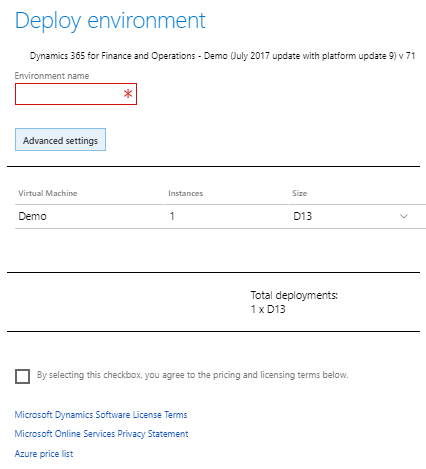 Steps 6-10
Steps 6-10
On the Are you sure you want to deploy? dialog box, click Deploy.
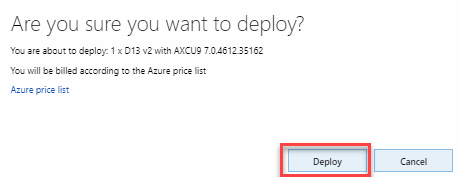 Step 11
Step 11
Accessing the Cloud Environment
Your environment will deploy and be ready to go in about 4 hours! Once it’s ready, you can access your new cloud environment through a URL or by using Remote Desktop Connection (RDC). Which method you decide on will likely depend on whether you’re using your environment as an end user or a developer.
An end user will typically access the environment through the web client, so the easiest access option is via a URL in a web browser.
A developer would likely use the RDC method to access the environment so they can develop code with Microsoft Visual Studio directly in the environment.
Accessing Through a URL
- Go to your LCS project page.
- In the Environments section, select the deployed environment.
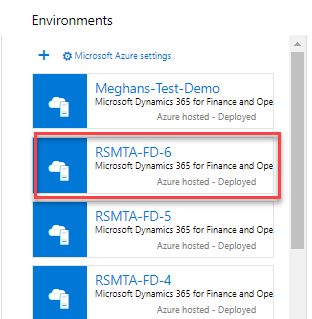 Steps 1 2
Steps 1 2
- When the environment page opens, in the upper-right corner, click Login > Log on to environment.
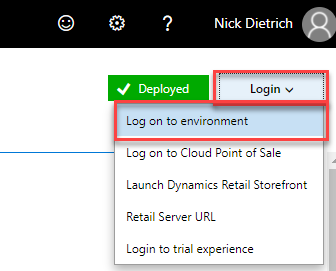 Step 3
Step 3
Use valid end user credentials to sign in to the application. If the current LCS user is the user who originally deployed the environment, that user is probably a valid end user and the administrator of the application.
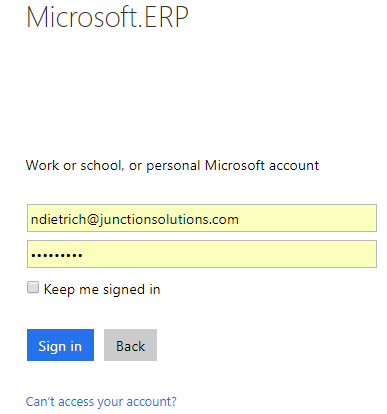 Step 4
Step 4
As a best practice, bookmark the page once you’re logged in!
Accessing Through Remote Desktop Connection (RDC)
- Go to your LCS project page.
- In the Environments section, select the deployed environment.
 Steps 1–2
Steps 1–2
- Click the VM name hyperlink in the Deployment Status or Local Administration Accounts sections to download the remote access file.
- Open the downloaded .RDP file.
- Enter credentials to connect.
- In the User name field, enter builtinaxlocaladmin. (You can find this information listed in the User name field in LCS.)
- In LCS, click the Show text icon next to the Password field to show the password.
- Copy the text in the Password field from LCS and paste it in as the password for the Remote Desktop Connection.

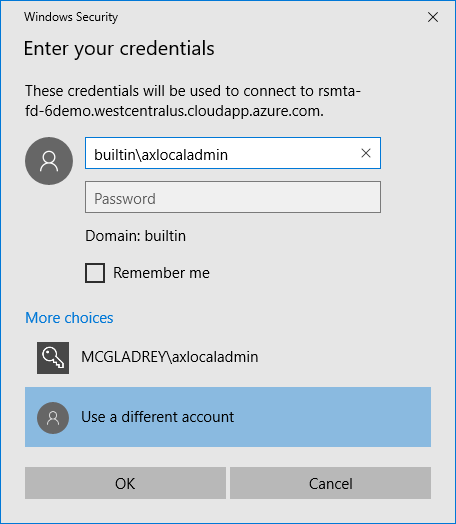 Steps 3-9
Steps 3-9
Click OK to connect to the environment.
Once you have connected to the environment through RDC, you can access the local application from the internet browser inside your environment. In this case, you will use the same base URL that would be used to access the URL from your standard computer browser. To find the URL, take a look at Step 3 of the “Accessing Through a URL” section above.
Conclusion
Even if you don’t have to give a demonstration tomorrow, I hope this was a useful lesson in the basics of deploying and accessing a cloud environment through Microsoft Dynamics LCS.
Want to learn more? Visit academy.rsmsus.com for eLearning courses and information about our client-site and Denver-hosted training!
By Nick Dietrich for RSM
Follow me on Twitter! @nickd365

 RSMUS.com
RSMUS.com